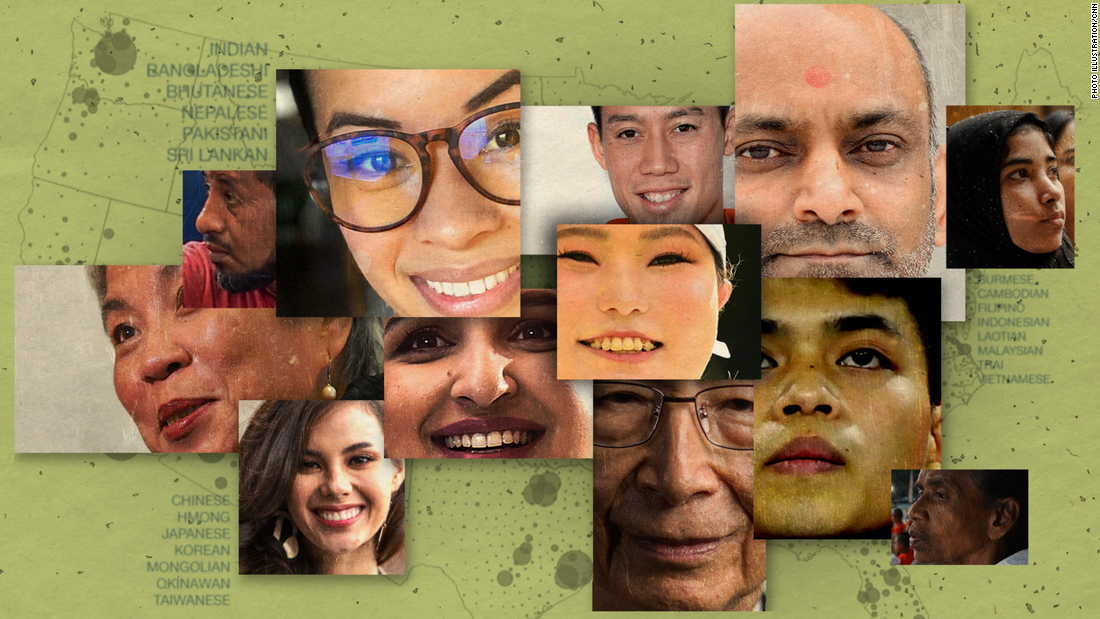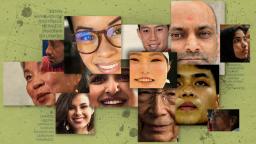

Here’s a look at how diverse Asians in America are and why we can’t speak about them as a single block.
An estimated 22 million Asian Americans live in the US, making up nearly 7% of the total population, US Census data shows. Those who self-identify as Chinese, Indian or Filipino ancestry make up the three largest Asian groups in the US, but no one ethnicity makes up a majority.
For decades, Asians were grouped together with Pacific Islanders by government officials and advocates. Currently, there’s an estimated 1.6 million Pacific Islanders living in the US, including many who identify as Native Hawaiian, Samoan and Guamanian or Chamorro.
About a third of Asians in the US live in California
Most Asians live around big cities in four states — California, New York, Texas and Hawaii — but for the most part, these cities are not home to a single ethnic group.
About a third of all Asians in the US live in California, where there’s a large Chinese population in Los Angeles County along with Filipino, Korean, Japanese and Indian communities. Meanwhile, the Asians in Texas are Indian, Vietnamese, Chinese, Filipino, Korean and Pakistani.
The Asian diaspora across the country is as diverse as the reasons that led people to migrate to the US.
There are approximately 309,000 Hmong people in the US. The largest share is in Wisconsin and Minnesota, where many settled as refugees in the 1970s.
In southern states like Louisiana and Mississippi, Vietnamese people make up the largest share of the Asian population. They resettled in the area following the Vietnam War.
They have the greatest income divide among racial and ethnic groups
Economically, Asian Americans are the most divided racial or ethnic group in the US, a Pew Research study found. High-income Asian Americans near the top of the income ladder earn 10.7 times as much as those on the opposite end of the income spectrum.
The highest earning Asians among those with a college degree and over 25 years old are Indian and Taiwanese, with a median household income of more than $100,000 per year. Meanwhile, the median household income for Burmese and Nepalese people is under $46,000 and $63,000, respectively.
Dinh said the income disparities are driven by numerous factors, including how Asians arrived in the US and the challenges that already existed in the communities where they settled.
“Folks like my parents who left as both people from Vietnam, left with nothing more than the shirts on their back so that today I could be free versus someone who might be from another country who immigrated with a master’s degree for their own countries,” Dinh said.
They are key players in the immigration debate
While some Asian Americans have been in the US for generations, others have come over the years under different circumstances, including refugees and asylees.
Asians comprise a significant portion of immigrants in the US but they are often overlooked in the debate over immigration reform. Of the more than 11 million undocumented immigrants in the US, 1.5 million people are from Asia, according to the Migration Policy Institute. That’s about 13% of the total undocumented population in the US.
They hold about 3% of seats in Congress
Asian Americans are mostly underrepresented in elected office across the US, despite having some gains in recent years.
“There are many more members of Congress than when I was a kid. We have the first AAPI Vice President in the history of our country in Kamala Harris but still our voice is not sufficient and in many ways Asian Americans are still invisible in our public life,” Tong told CNN.
AAPI elected officials, Tong says, are committed to serve even if they often face stereotypes and are among the few people of color in the room.
“People still have a hard time seeing and conceiving Asian Americans and Pacific Islanders as good elected officials,” he said.